
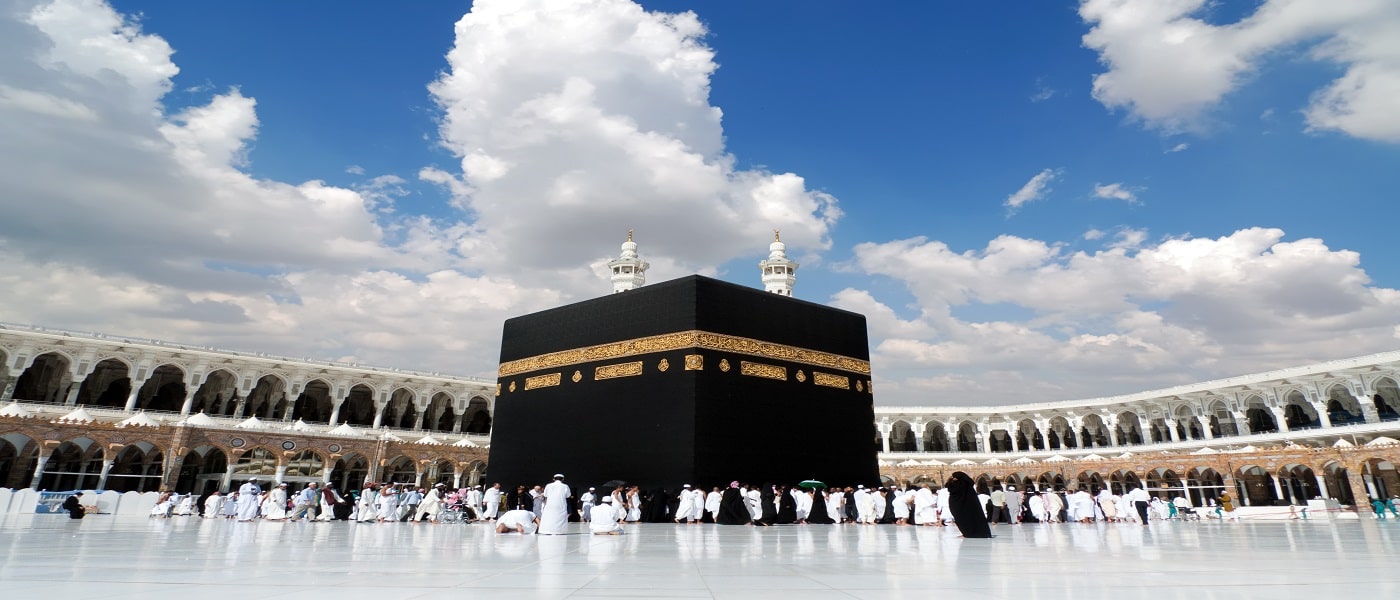
Hajj The Holy Pilgrimage
The best way to begin this article is by this beautiful saying of Imam Sadiq (AS) regarding Hajj: “The pilgrims, i.e., performers of Hajj or ‘Umrah’ are the guests of Allah, if they ask for something, He will answer them; if they supplicate to Him, He will answer them; if they intercede, He will accept it; and if they keep quiet, He will be the beginner, and they will be compensated instead of one Dirham, a million Dirhams” [i].
Hajj The Holy Pilgrimage
Literally speaking, Hajj means heading to a place for the sake of visiting. In Islamic terminology, Hajj is a pilgrimage made to Kaaba, the ‘House of God’, in the sacred city of Mecca in Saudi Arabia. It is obligatory for every Muslim to perform Hajj at least once in their lifetime provided that he/she is physically and financially able to do so. The rites of Hajj, which go back to the time of Prophet Abraham who built Kaaba after it had been first built by Prophet Adam, are performed over five or six days, beginning on the eighth and ending on the thirteenth day of Dhu al-Hijjah, the last month of the Islamic calendar.
Hajj is the ultimate form of worship, as it involves the spirit of all the other rituals. Nearly two million Muslims from all over the world meet each other and refresh in themselves the faith that all Muslims are equal and deserve the love and sympathy of others, regardless of their race, wealth, status, class, culture and ethnic origin [1].
Generally, there are three kinds of Hajj: Hajj al-tamattu, Ifrad, and Qiran. The first is the duty of a person whose home is located 16 farsakhs (about 90 km) away from Mecca. The second and the third (Ifrad and Qiran) are the duties of those who live in Mecca or outside it within this distance. Hajj al-tamattu differs from the two other kinds in its rituals and practices which is the focus of this article. It is also noteworthy that even Hajj al-tamattu becomes obligatory under certain circumstances, including sanity, adulthood [ii] and Istita’ah [iii] [2].
In the context of Hajj al-tamattu, the question of ability to perform this task (Istita’ah) and who is capable of it (Mustati) is of utmost importance and a very sensitive issue. To be Mustati, you should have the following abilities:
financial ability – i.e., you have enough money to support yourself and your family on your journey,
physical ability- i.e., Hajj is not obligatory for the sick, the old or those who are either unable or would face severe hardship,
Sirbi ability - i.e., the route is open and safe,
Time ability- i.e., that there should be enough time to go on Hajj after becoming Mustati [3].
Bearing these conditions in mind, let’s take a brief look at the rituals a person should perform when they go on Hajj.
Basically, Hajj al-tamattu consists of two parts: Umrah of Tamattu [iv] and the Hajjah, both have to be performed in the same year in Dhu al-Hijjah.
The rituals that have to be performed in the first part (Umrah) include five stages:
Ihram
Circumambulation (Tawaf)
Prayer of Tawaf
Sa’y
Taqsir
The pilgrims who visit Prophet Muhammad's (PBUH&HP) shrine and Imams' sepulcher in Medina before performing Hajj rituals, become Muhrim in Masjid al-Shajarah, and those who travel to Mecca from Jeddah become Muhrim in Juhfah.
To be Muhrim, men should take out all the clothes that are stitched and instead wear a two-part unsewn and clean white garment, one covering the lower parts of their body and the other their shoulders. Women, however, can wear stitched clothes provided that they are clean and white, and their face is not covered by anything. Then intending to perform the Umrah of Tamattu, they should say: LabbaikAllahommalabbaik,labbaika la sharikalakalabbaikm [vi].
Now you are Muhrim and ready for entering the sacred house of God.
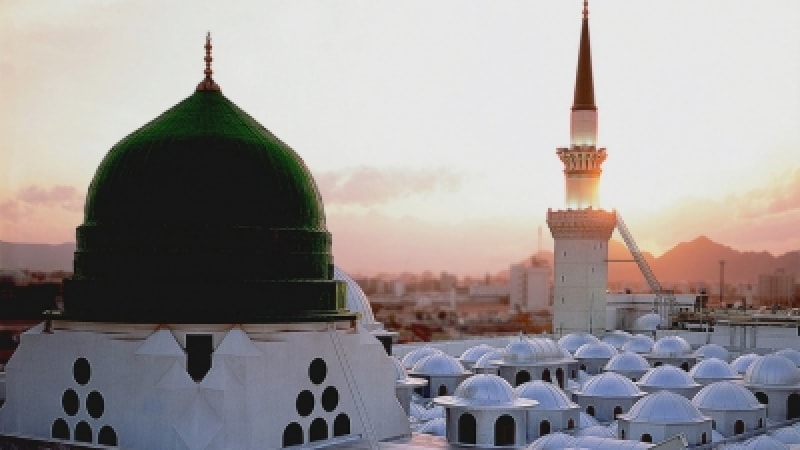
There are twenty-five things which are forbidden in the state of Ihram. These are:
Hunting the land animal
Sexual intercourse
Kissing the woman.
Touching the woman
Looking at the woman and indulging in foreplay
Masturbation
Marriage
Using perfume
For men only: wearing the sewn clothes
Applying kohl on the eyes
Looking in a mirror
Wearing shoes or socks (For men only)
Cursing other people
Quarreling with others
Killing the insects on one’s body
Using cosmetics
Applying oil on the body
Getting rid of the bodily hair
For men only: covering the head. (Even submerging the head in a body of water is not allowed, for both men as well as women.)
Covering the face (For women)
For men: shading themselves from sun or rain.
Causing blood to come out of one’s body
Clipping the nail
Pulling out the teeth [4]
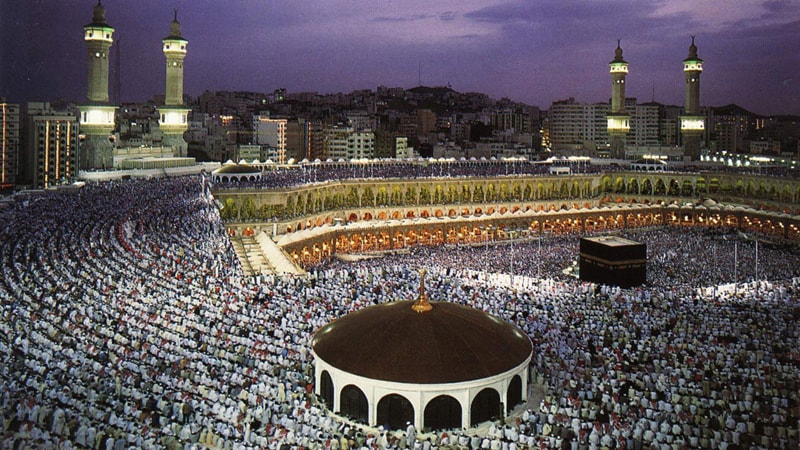
After saying your intention (Niyyah), you have to circumambulate (turn around) Kaaba located in Masjid al-haram seven times; “a fixed point in the center and everything else moving round it; a circular movement… sun in the center and turning round it are people, each a star in their own sky” [5]; you are performing Tawaf.
The reason for this rite is that the heart and soul of the pilgrim should move around the House of Allah and his love for Allah should become so great that no worldly attraction, neither the East nor the West, would distract him from this path. Only the Oneness of Allah (Tawhid) should attract him. Tawaf also conveys the message of unity. The pilgrims have come from different countries in the world; they have all gathered in Masjid al-haram circumambulating around Kaaba. It seems as though they were drops of water that now have made a huge ocean altogether [6].
When circumambulating, note that Kaaba should be on your left side, your clothes should be completely clean, and you should perform Wudu (ablution) before starting. Also, be careful not to bump into other pilgrims and keep your shoulders straight. After completing this holy task, you should perform a Salat which is called prayer of Tawaf (Tawaf’s Salat) and is performed like Morning Prayer behind Maqam Ibrahim.
Now, you have done your Tawaf and performed the Salat after it; what you will go through next is called Sa’y. You should walk the distance between Safa and Marwah seven times, starting from Safa and terminate the first lap at Marwah, then walk the second lap from it to Safa and so on till you terminate the seventh lap at Marwah. Don’t worry, if you get tired you are allowed to take a brief rest and start over from where you stopped.
Last but not least, in the rituals that should be performed throughout Umrah al-tamattu is called Taqsir, meaning that you have to cut a short piece of your hair or nails. With this task done, your Ihram will be finished, and everything that was Haram in this process will become Halal again, and you can take off your Ihram clothes.
Congratulations! You made it; you have completed the first part of your pilgrimage. Now, you will enter the next phase, called Hajjah.
Hajjah consists of 14 stages:
Wearing Ihram
Staying at Arafat
Staying at Muzdalifah (Mash'arul Haram)
Going to Mina
Stoning the Jamratul Uqba
Sacrificing an animal
Taqsir
Tawaf of Hajj
Prayer of Tawaf of Hajj
Sa’y
Tawaf-un Nisa
Prayer of Tawaf-un Nisa
Staying at Mina
Stoning the three pillars (Jamaraat) on the 11th and 12th of the month
On the 8th day of Dhul-Hijja, pilgrims become Muhrim again and go to Arafah -a plain about 20 km Southeast of Mecca- and stay there on the 9th of Dhul-Hijja from noon to sunset. You can walk, sit or sleep, talk or keep quiet and think in there, but it is strongly recommended to spend the entire day, especially the afternoon, in supplication and Dua.
At sunset, you have to set out to Muzdalifah (Mash’arul Haram) where you are supposed to stay until sunrise and at which you gather pebbles for hitting the Jamaraat. Then on the 10th day, you leave for the land of Mina. You need to stone the Jamratul Uqba (biggest pillar) with seven pebbles, sacrifice a sheep, a camel or a cow, and shave your head or perform Taqsir [vii].
After performing three of these you can come out of Ihram, but there are still acts you have to do and ones that are forbidden like wearing perfume, hunting, and marital relations.
Acts that remain to be performed:
Tawaf of Kaaba; you turn around Kaaba, seven times as you did for Umrah.
Salat of Tawaf; after performing Tawaf, recite two-Rak’at Salat behind Maqam-e- Ibrahim.
Sa’y; perform Sa’y the same as the one did for Umrah except for the intention which has to be of Hajj-al-Tamattu.
Tawaf-un-Nisa; return to Kaaba and perform another Tawaf with the intention of Tawaf-un-Nisa of Hajj-e-Tamattu.
Salat of Tawaf-un-Nisa; recite another two Rak’at Salat behind Maqam-e-Ibrahim with the intention of Salat of Tawaf-un-Nisa of Hajj-al-Tamattu.
Spending the night in the land of Mina; it is obligatory (Wajib) to spend the night of 11th and 12th of Dhu al-Hijjah in Mina.
Rami al Jamaraat; while in Mina, you have to stone all the three pillars (Jamaraat) with seven pebbles between sunrise and sunset on both the 11th and 12th day.
After stoning the three Jamaraat on the 12th day, you will leave Mina for Mecca before sunset. Your Hajj is complete, and you are free to do everything you were allowed to do before Ihram. There is also a great emphasis on visiting the Prophet's mosque in Madinah before or after Hajj. Pilgrims return to their countries after Hajj rituals, and they are as pure as a newborn baby.
May God accept your Hajj.
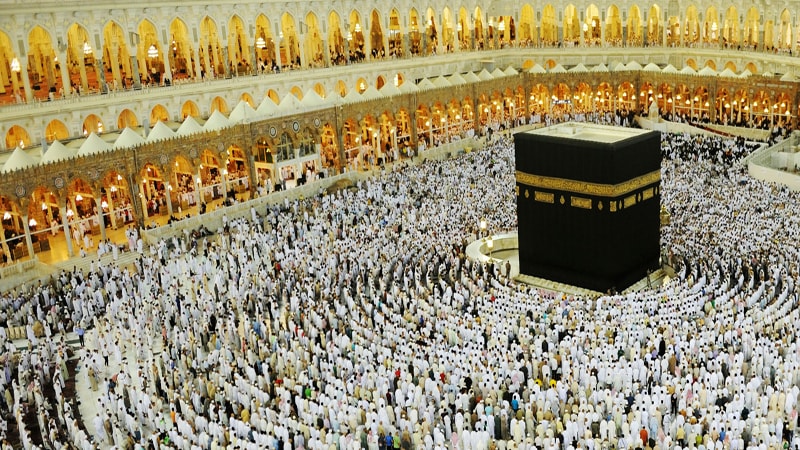
Notes:
[i] A unit of currency in several Arab states
[ii] People who have reached the age of shar‘ī puberty
[iii] Having the capacity to perform Hajj
[iv] Not to be confused with the Umrah al-mufradah which refers to Umrah that is performed independently of Hajj. However, they have some rituals in common.
[vi] «لَبَّيْكَ اللّهُمَّ لَبَّيْكَ، لَبَّيْكَ لا شَرِيكَ لَكَ لَبَّيْكَ»: "Here I am (for Hajj). Oh Allah, here I am. Here I am. You have no partner. Here I am."
[vii] Women clip their hair or the tip of their fingernail.
References:
- what is Hajj
- Hajj
- Hajj
- Hajj & Umrah
- Shariati, Ali. Hajj (The Pilgrimage)
- Hajj
Share This Article
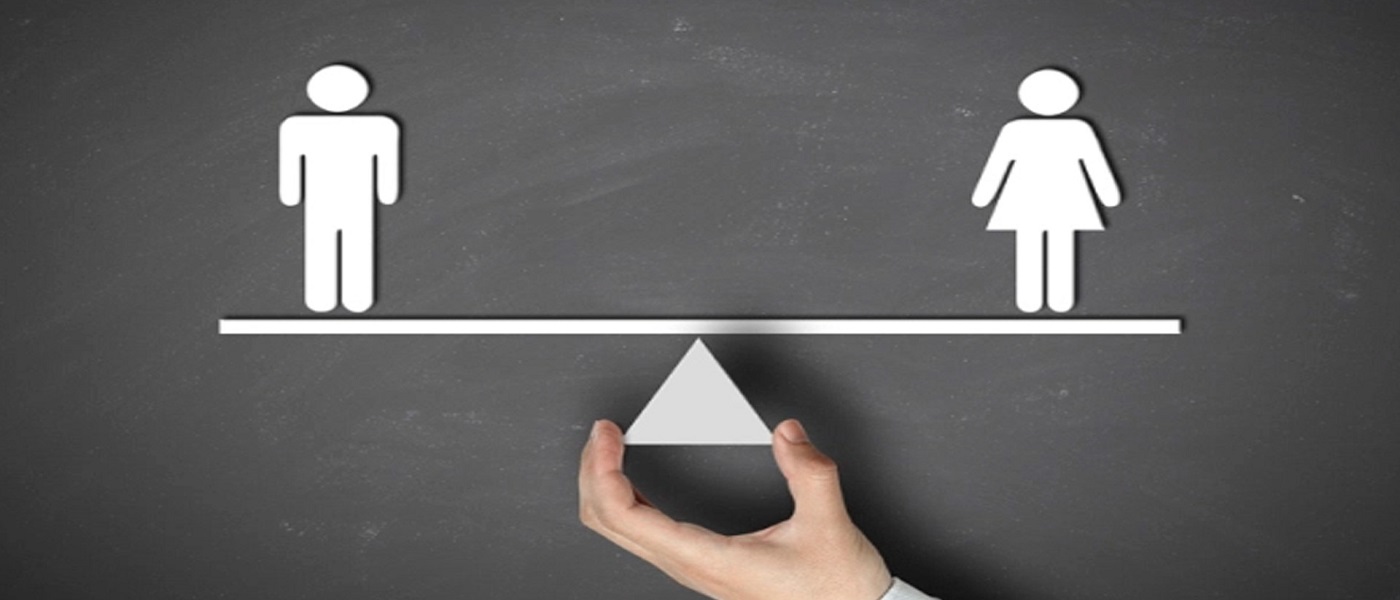
Is Islam Compatible with Feminism?
Feminism is a movement of the modern times and may not have been heard at the time of Prophet Muhammad (PBUH). Issues like feminism that belong to the new era should be considered from different aspects to see if they are compatible with Islam or not. In most of the similar issues, Islam has some common views and some contradictions.
To find out if Islam accepts feminist theories and ideas, and advocates of feminism, we should first understand what feminism is and when and why it arose?
The Main Purposes of Feminists
The first feminist movement started, to gain some rights for women. These include “guardianship of infants, property rights, divorce, access to higher education and the medical professions, equal pay and protective legislation for women workers - many of which women are still campaigning for today!” [1]
As I mentioned, these issues are not restricted either to western countries or countries with a majority of Muslim population. Even in Muslim countries, there were unfair social and family treatments toward women. We will later discuss the fact that it is not the Islamic rulings that subordinate women, but the traditions of those countries who embraced Islam within years.
Thus feminism, which started in 1848 in America, gradually spread over the world. Women and some men who were in favor of women’s rights became feminists without having a real knowledge of feminism [2].
What is Common in Islam and Feminism?
Although I mentioned that in Muslim countries, women were not treated fairly and some of them became feminist, it never means that the unfair treatments toward women were because of Islamic rules. The fact is that the unjust treatment of women is sometimes due to different cultures and traditions. This unjust treatment existed at the time of pagans even before the birth of Islam.
It was a common act between pagans of Arab peninsula who used to be ashamed of their girls and prefer boys over girls. They used to bury their infant daughters alive, as they used to consider them inferior to men.
Quran describes the attitude of pagans toward their baby girls clearly; “When one of them is brought the news of a female [newborn], his face becomes darkened, and he chokes with suppressed agony. He hides from the people out of distress at the news he has been brought: shall he retain it in humiliation, or bury it in the ground! Behold! Evil is the judgment that they make.” (16: 58 -59)
In these conditions, where women were inferior to men, Prophet Muhammad (PBUH&HP) came with the Quran which gave women a high position and value.
It is narrated in history that Prophet Muhammad (PBUH) had a few sons who all died at a young age. Then he was granted a Daughter. Pagans used to humiliate him for not having a son to keep his family lineage. Then this chapter was revealed to him:
“Indeed We have given you abundance. So pray to your Lord, and sacrifice [the sacrificial camel]. Indeed it is your enemy who is without posterity.” (108: 1-3)
And from his only daughter, his generation continued until now which is an honor for a large group of Muslims.
The Status of Women in Islam
Most of the rights that feminists are campaigning for in this era were mentioned in the Quran 1400 years ago;
Property Rights
“To men belongs a share of what they have earned, and to women a share of what they have earned.” (4:32)
According to Islam, women have a complete right to have an earning. They also have the right to use their earnings in any way that they desire. Besides, men have the obligatory responsibility to pay for women’s daily expenses;
“Men are the managers of women, because of the advantage Allah has granted some of them over others, and by virtue of their spending out of their wealth.” (4: 34)
The Right to Work in Key Positions
At the time of Prophet Muhammad (PBUH), there were many women who used to work in the market to earn money for their living. Prophet Muhammad (PBUH) not only encouraged them for their job but also taught them the right Islamic rules of business and commerce. The most significant example was Prophet Muhammad (PBUH) himself who used to trade for Lady Khadijah (AS).
Access to Higher Education
According to Islam, gaining knowledge is obligatory for both men and women and knows no time limit in one’s life. Prophet Muhammad (PBUH) says: “Gaining knowledge is an obligation upon all Muslim men and women.” [3]
Marriage and Divorce
Women have the right to choose their husbands. They have the right to ask the court for separation as well if for any logical, reasonable purpose they do not wish to continue their married life.
Spiritual Equality
“Whoever acts righteously, [whether] male or female, should he be faithful, We shall revive him with a good life and pay them their reward by the best of what they used to do.” (16:97)
All the above points and what will follow in this article is emphasizing on the point that according to Islam, men and women do not have the same rights, but their rights are equal.
Why Equal Rights and not Same Rights?
Murtaza Mutahhari argues that for having equal rights in the society, is it necessary to have the same rights too? He gives an example of a father who would like to divide his wealth between his children. He has a farm, a piece of land and a business company, the price of them, moneywise, is the same but they do not look the same.
The father knows his children, their talents, and interests. So, he gives each of his properties to each child based on his knowledge of the child’s potential. In this example, while the price of the properties is the same, but they are not equal for all children. [4]
The same is with the rights of men and women. They have equal rights according to their talents, potential, and biological features, but their rights are not the same.
Efforts to Reconcile Islam with Feminism
Although Islamic treatment of women is fair and for the benefit of women, family, and society, still there are feminist campaigns that try to show Islamic rules are against women’s rights. Some of the Islamic rules that are usually mentioned by feminists are as follows:
The Islamic Dress Code
It is acceptable that wearing the Islamic dress code may cause some hardship for Muslim women, but nothing can be reachable without accepting its difficulty. Just like a mother who can never enjoy the sweetness of having a baby, unless she goes through nine months of pregnancy.
Thus, wearing the Islamic dress code that will lead to better family life and a safer society is worth its difficulty. Same is with the right to have free relationships with the opposite sex, which is forbidden according to Islam without specific conditions. This applies to both men and women to strengthen the base of family.
Men Having Authority over Women
The authority that Islam gives to men over their wives is the authority of family management. It does not mean that they can be oppressive towards women.
Polygamy
Polygamy is also an Islamic rule that can take place under certain conditions. But it does not give the right to all Muslim men to marry more than one wife. So, neither men should misuse this Islamic rule for their own benefit, nor it should be taken as a tool of undermining Islam without enough knowledge about the issue [i].
Inheritance
According to Islam men have a twice a share of a woman in inheritance: “for the male shall be the like of the share of two females.” (4:11)
Imam al-Sadiq (as) was asked for the reason of this ruling in Islam, and he replied “that it was because Islam had exempted woman from armed combat, and moreover that dower and maintenance had been imposed upon man for her benefit. What is more, in certain cases of doubt, in which blood relatives had to pay ransom money, a woman has been exempted from sharing with others in the payment.
These are the causes why the share of a woman is less than the share of a man.” Thus, it is “the special situation of woman in inheritance is the effect of dower and maintenance is the effect of dower and maintenance and exemption from armed combat and paying ransom money.” [5]
Are Men and Women Equal according to Islam?
According to Islam men and women do not have the same rights, but they have equal rights, which differ from each other according to each person’s biological, physical, and spiritual differences. An example is that Muslim women are not allowed to become judges, which is because of their high level of emotions which is required for a wife and a mother.
The love that a wife and a mother provide for the family is what makes the base of a family firm. While men are more logical to support the family by reason and making tough decisions at critical points. So, it has become an obligation on men to supply for the family or go for defense in war situations. There is no obligation over women in these cases.
This does not mean that women cannot put enough effort to strengthen their reason for their emotion. But if they do so, they have changed their nature, and their life path will be totally changed, in a way that they may never reach the safety and comfort that a woman requires.
Conclusion
If Muslims act according to the Islamic rules and commands, they will not need any of these feminist ideas. Since many of those rights that feminists are trying to gain are already given to Muslim women according to Islamic law.
It is good to keep in mind that the ultimate goal of every human in this life is to reach safety and calmness. This is easier and faster to gain by obeying the rules of Islam, simply because these rules have been ordained by the creator of human beings.
Thus, we can conclude that Islam is not completely compatible with feminism. Islam accepts those points of feminism that is for the best of human beings and the society. And will reject the rights that feminism defines for women while they would harm the woman, family and the society.
Notes:
[i] Find information about Islamic rules on polygamy here: https://www.salamislam.com/content/why-does-islam-allow-polygamy-part-1/3
References:
- Feminism
- ibid
- Amali Al-Sadouq, p. 419.
- Mutahhari, Murtaza, The rights of Women in Islam, p. 115
- Mutahhari, Murtaza, The rights of Women in Islam, p. 225
Read More
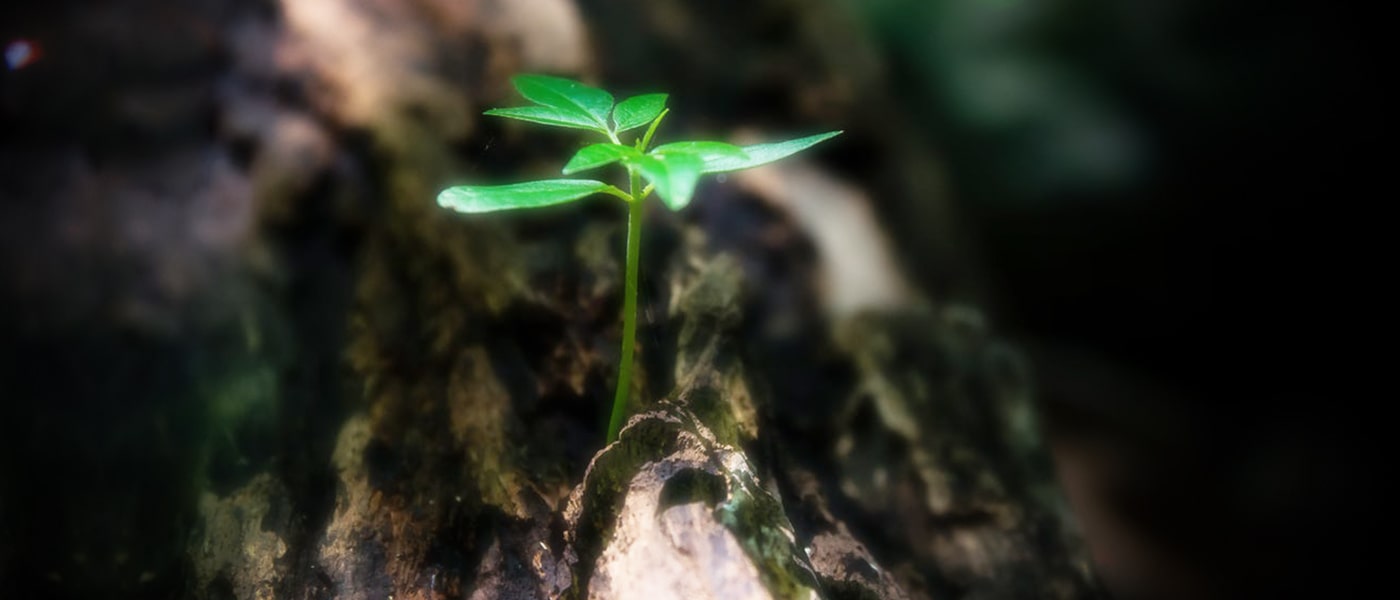
The Holy Struggle
One of the ten practical principles of Islam, The Holy Struggle, Jihad, is literally defined as “hardship, endeavor, exaggeration in work, reaching the height of something and capability”, while in the Sharia of Islam Jihad is sacrificing one’s life and property primarily for the sake of Allah, elevating and sustaining Islamic beliefs and standpoints. In this sense, Jihad is the act of Defending the Islamic territory against the assaults and intrusions of outsiders and invaders.
The essence of Jihad lies in Defense, thus any violence which is shown with the intention of invading a country or a nation’s lives, property, etc. and for manipulating their economic potentials or human resources, not only is not called Jihad but also considered as the overt manifestation of injustice and cruelty which is strongly rejected in Islam.
In Which Cases The Holy Struggle (Jihad) is Possible?
If an individual or a nation participates in a struggle in order to defend their life, money, property, or independence, they have in fact committed a holy task since they have stood up against the injustice of the intruder who has questioned their legitimate human rights. Therefore, the act of Jihad is permitted in the following cases:
1. Life and Property:
When the life and possessions of the people of a country are threatened by the invasion of the intruders and opportunists, they have the right to defend themselves against these threats and retain what has been taken away from them.
2. Personal and Domestic Privacy:
It is the whole nation’s responsibility to defend the personal and domestic privacy of its members, preventing the enemies to violate and invade the family units especially women and children.
3. Independence:
To defend national independence and integrity is a totally legitimate action for a nation. Accordingly, if a government or nation tends to undermine or insult the independence of another nation and try to manipulate them, the latter is bound to defend itself in order to restore its legitimate rights.
4. Human Rights:
The struggle to retain your rights is not limited to an individual or a nation; rather there are some values that are far beyond these and include the whole of humanity. In other words, Jihad is the act of defending the “right” that spans not only personal and public ones but also that of humanity.
Freedom is one of these human values that is precious for every single person on earth regardless of their nationality or religion, so when it is threatened or undermined in any place around the world every conscious soul finds it necessary and feels responsible to defend and retain it; if a group of people is being oppressed or treated unfairly, one cannot and should not remain indifferent to this injustice and is bound to fight for their freedom. There existed and still exist many freedom-loving people who are not just concerned about their own country or nation and instead strive for the freedom of all human beings around the globe.
To further illustrate this issue, let’s consider this example: nowadays, medical researchers are in a constant struggle to find a final and determinate cure for cancer, but they are still unsuccessful. Imagine the cure was found by a medical company, but its managers amassed it and prevented people from using it in order to increase their own interest, or even destroyed the formula so that no one would reach it, they have violated the rights of the whole humanity and should be fought with.
Are Concepts Like Monotheism (Tawhid) Which Is One of the Islamic Axioms Considered as Personal Matters or Human Values?
The answer is yes monotheism, and the concepts like this are of human values and need to be defended, but it does not mean that we are allowed to impose these beliefs on an individual or a nation since faith and belief is something that each person should reach and accept through his own intellectual and logical investigation and not through force; this is clearly reflected in this verse of Holy Quran: “there is no compulsion in religion” (2:256).
Nevertheless, if this axiom -or any other fundamental belief in Islam- is being threatened or insulted in order to arise enmity and to undermine Islam, it is every Muslim’s duty to stand up for this cause.
Peace vs. Surrender
Up to this point, we understood that the keyword in the definition of Jihad is Defense in the four cases above. The religion of Islam is fundamentally the religion of peace and strongly recommends a peaceful relationship with others, as these verses explicitly reveal: “And if they incline toward peace, then you [too] incline toward it, and put your trust in Allah. Indeed He is the All-hearing, the All-knowing” (8:61), or “So if they [polytheists] keep out of your way and do not fight you, and offer you peace, then Allah does not allow you any course[of action ]against them”(4: 90).
However Islam makes a clear distinction between the idea of peace and surrender; while it encourages the former, it emphatically rejects the latter. In other words, peace is reached when both parties are on friendly terms, respecting each other’s beliefs and rights mutually, and live beside one another without intruding or violating each other’s rights.
But if one of the parties were to keep on invading the other one – either covertly or overtly -, and the one whose rights have been threatened did not react, this would not be called peace anymore, rather surrendering and yielding to their injustice which is totally unacceptable in Islam.
Finally, it should be noted that Islam is a religion that ranges all aspects of human’s life and has established rules for each; accordingly, it should include a rule which would protect individuals as well as the society against possible threats and guarantee society’s tranquility and harmony through retaining the social justice. Jihad is that principle that would practically provide these opportunities for Muslims.
Read More

